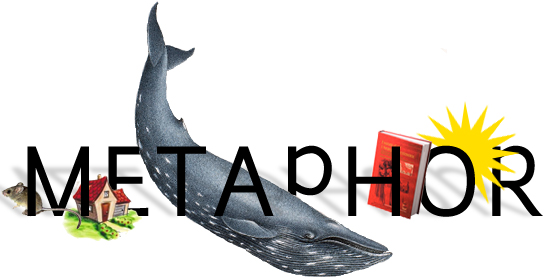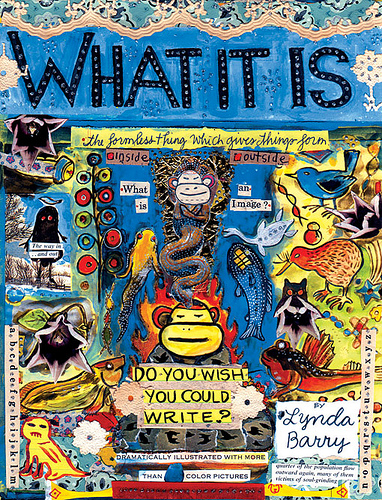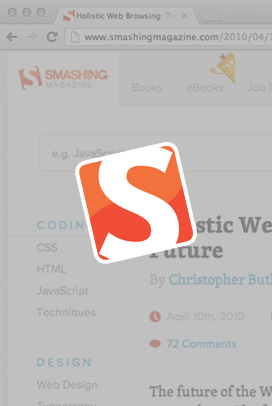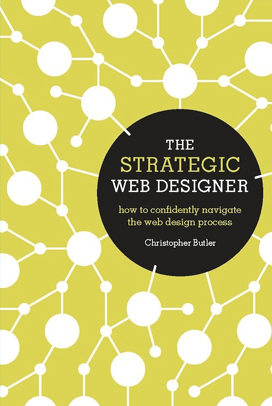
There are a couple different lines of thinking in what I’ve read about writing recently, and I’m not sure how to put them together.
The Efficiency Model
On the one hand, there are guidelines for writing for business in general and the web in particular. The main themes here are efficiency and utility: give your users what they’re looking for. Include directions that will let them accomplish tasks easily. Use real language. Cut out the corporate boilerplate that no one will read anyway. If copy doesn’t serve a purpose for your users, chuck it. This all seems like good advice, and most websites could benefit by following it more closely.
The Metaphor Model
On the other hand, I’ve been coming across a lot of more general insights into human communication–some in the form of writing advice, some as an incidental point within an article about something else altogether–and there the themes are different. For good writing, and for good thinking, what we’re looking for are metaphor and narrative. As James Geary argues in a TED talk on the subject, metaphor is the basis of our thinking; we use it constantly, and we can’t deal with abstract concepts without it. Jonah Lehrer writes, in a Wired article on how scientists deal with unexpected information, about the problem-solving success of one lab as compared to another. The distinguishing factor: “a distinct type of interaction in which the scientists were forced to rely on metaphors and analogies to express themselves.”

Most extensively, the wonderful What It Is–a combination graphic memoir, meditation on writing, and creative writing activity book by Lynda Barry–takes on the question of why writing fails to come alive. For Barry, the key and often missing ingredient is images, meaning not literally pictures (although those are good too), but experiences evoked through what’s written: “We notice that when people tell the story of their lives it often sounds like an obituary–a lot of general information but almost no images.” Her sample life story illustrates the point: “I was born in Wisconsin in 1956. My family moved to Seattle in 1961 where I attended public schools and graduated from The Evergreen State college in 1978. I began drawing comic strips…” She points out that the same is true for journal writing (“a lot of writing about our feelings…but almost no images!”). And the same is certainly true of too much writing online–a lot of words, but no images, no metaphors, no narratives. Nothing that could come alive and make the reader care about what they’re reading.
Synthesis?
Is there a way to combine these models? Does the efficiency & utility model of good website writing leave room for metaphor? I’m not honestly sure. You probably wouldn’t want to get too metaphorical with the instructions you provide for filling out a form. Narrative isn’t really efficient–start adding in the imagery, and “My family moved to Seattle in 1961 where I attended public schools and graduated from The Evergreen State college in 1978” expands into a paragraph, or a book. Metaphor is spatially efficient–it packs a lot of meaning into a small space–but it’s not easily controlled. It triggers reactions that depend on the reader’s own feelings and experiences, rather than just the facts on the page; it asks to be unpacked in ways that can send the reader’s thinking off in other directions. It doesn’t keep them moving forward in a goal conversion funnel. It risks misunderstanding. Actually, business writing is full of metaphors, but the ones that make it in are those that have calcified into cliche. (Will this post be a home run?) They’re safe and efficient precisely because they no longer serve the disruptive function that makes metaphor effective. You gloss over them when you read them. The standard business writing advice is to excise them ruthlessly, and again, I think that advice is mostly right.
A couple of comments on metaphor do point to uses for it in business writing. Geary points to studies showing that metaphor and analogy affect people’s assessment of situations in ways that impact their predictions and decision making. That’s a power you want access to when you’re creating content that will shape a reader’s perceptions (for good, of course, not for evil). In the Lehrer example, the successful lab had to use metaphor because it was made up of scientists from different fields–they “lacked a specialized language that everyone could understand,” so metaphor let them bridge the gap. There is frequently a similar language gap among divisions of a company, or between a company and its customers, and metaphor suggests a way of circumventing the different perspectives to build a connection.
Another possibility comes from the concept of disruptive innovation as applied to user experience (written about here by librarian Stephen Bell as a model for library service). The idea “is that businesses based on the ‘simple-cheap-convenient’ model can be effectively disrupted by those firms that offer experience innovations.” As explained in an article in Strategy & Leadership (article is free only for subscribers): “Many of the successful innovations of the past several decades – like Starbucks – involve customers spending more time with the company, time that has special value. Think of it as competing on the basis of ‘time well spent.'” Not less time–more, but also higher quality. Successfully using this model requires creating an emotional connection with customers–something that’s hard to do, and is exactly what metaphor excels at.
Thinking about all of the writing that goes into a website, there are clearly places where “simple-cheap-convenient” is what’s called for. Efficiency and utility are the best standards for whether your form instructions work. But are there other places where a different model could create a different kind of engagement? After all, storytelling is one of the oldest and most widespread ways that people spend quality time together. Are there areas of your website where efficiency could be backgrounded in favor of using metaphor and narrative to create compelling writing–something that readers may experience as “time well spent”? Are there places where you’re doing this now, or sites that have effectively engaged you this way as a reader? Or is there too much risk of losing your users, who (as studies consistently show) are in a hurry and prefer to scan rather than to read?


